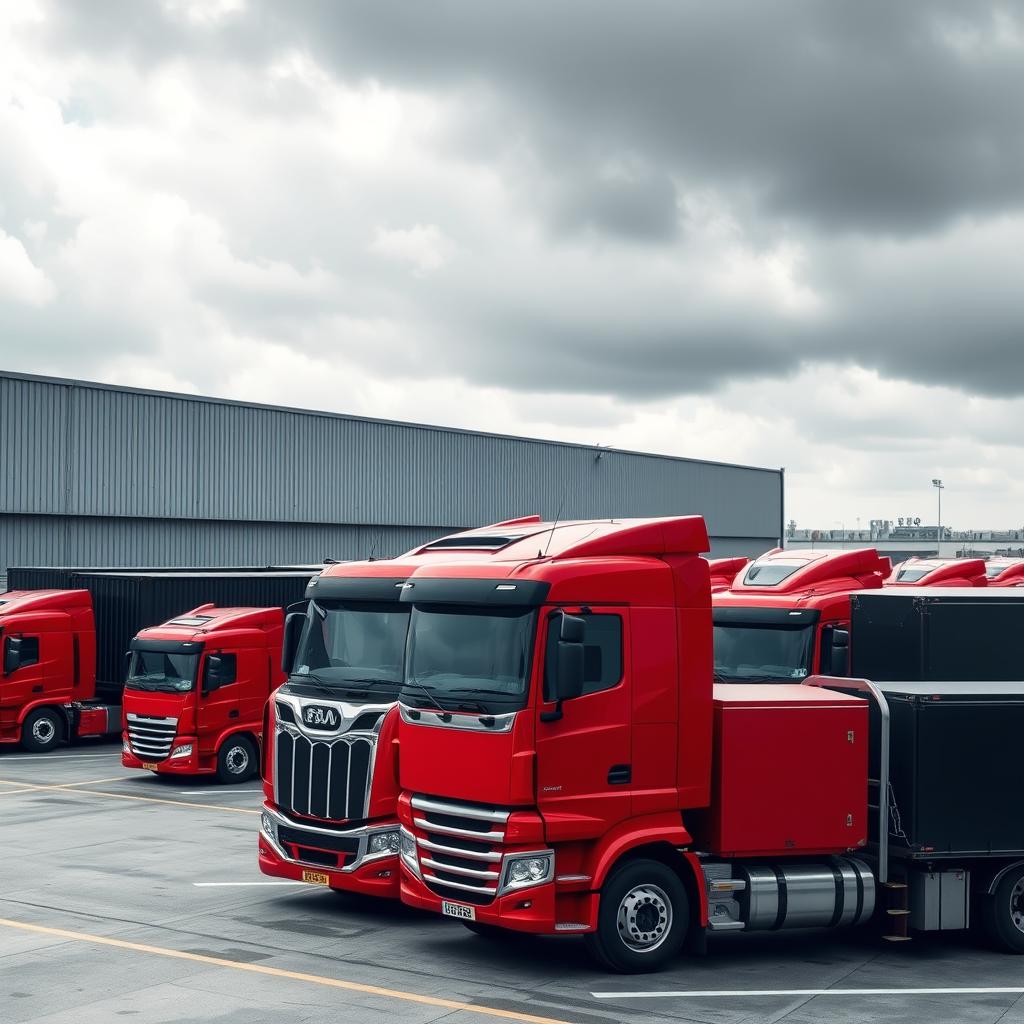When it comes to running a trucking business, efficiency is key. The landscape of the logistics industry is rife with challenges, from fluctuating fuel prices to regulatory changes. To stay ahead, streamline your operations. Below are five essential steps to achieve just that!
1. Optimize Route Planning
One of the most significant ways to improve efficiency in trucking is to optimize your route planning. Not only can this save time, but it also reduces fuel costs. Here are some tips:
- Use Routing Software: Invest in a reliable routing software that considers traffic patterns, road conditions, and weather forecasts. This software can help you map out the best routes.
- Consider Delivery Windows: Always factor in delivery windows when planning your routes. Understanding your customers’ schedules can help you optimize your timing.
- Review Routes Regularly: Just because a route was effective last month doesn’t mean it’s still the best option today. Set aside time each month to review and adjust your routes as necessary.
Common Questions About Route Planning
Why is route planning so important?
Proper route planning can drastically reduce costs and increase customer satisfaction due to timely deliveries. It also helps reduce wear and tear on your trucks.
How can I ensure my drivers adhere to the planned routes?
Using GPS tracking tools will not only help you monitor your drivers but can also provide them with real-time updates should they encounter issues on the road.
2. Invest in Technology
Embracing technology is vital for streamlining operations. Many trucking companies are turning to tech-based solutions to improve productivity and connectivity.
- GPS Tracking: This allows you to monitor thelocation of your trucks in real time. It ensures drivers are on the right track and helps you make informed decisions.
- Electronic Logging Devices (ELDs): These devices automatically record driving hours to ensure compliance with regulations, thus reducing the risk of penalties.
- Fleet Management Software: A centralized platform can help in various aspects, from vehicle maintenance scheduling to performance analysis.
Addressing Tech Challenges
I don’t know how to implement new technology.
Don’t worry! Many software vendors offer onboarding assistance and training sessions. Start small with one type of technology and expand as you become comfortable.
What if I don’t have a big budget for tech investment?
Look for cloud-based solutions that offer subscription models. Many provide functionalities relevant to trucking without high upfront costs.
3. Enhance Communication
Another integral element to streamlining operations is improving communication between all parties involved—drivers, dispatchers, and customers. Here’s how to foster better communication:
- Daily Briefings: Establish a communication system to convey daily objectives and updates. This prepares your team for any unexpected challenges.
- Use Communication Apps: Employ mobile applications that facilitate easy communication among drivers and dispatchers. This helps address issues promptly.
- Customer Feedback: Encourage clients to share their experiences. Their feedback is invaluable in understanding where improvements are needed.
Communicating Effectively
What techniques can enhance communication?
Regular meetings, concise digital messages, and face-to-face interactions where possible can all contribute to a culture of open communication.
How can I ensure my drivers are updated on communication protocols?
Make these protocols part of their training and offer refresher sessions periodically.
4. Centralize Your Documentation
Paperwork can bog down trucking operations. Centralizing documentation streamlines processes for invoicing, fleet management, and compliance.
- Digital Document Management: Switching to a digital format can help reduce clutter and make it easier to locate necessary documents.
- Standard Operating Procedures (SOPs): Develop clear SOPs for freight tracking, invoicing, and regulatory compliance. Ensure all team members are trained and understand these procedures.
- Regular Audits: Perform regular audits to ensure that paperwork is up-to-date and easily accessible. This minimizes confusion and saves time.
Finding Solutions to Common Document Issues
How do I make the shift from paper to digital documents?
Start by scanning essential documents and using document management software. Transition gradually to avoid overwhelming your team.
What if employees resist change?
Involve your team in the transition process and emphasize how these changes will make their workloads easier.
5. Prioritize Driver Training and Welfare
Your drivers are your most valuable asset. Prioritizing their training and welfare can lead to significant operational improvements. Here are some aspects to consider:
- Regular Training Sessions: Hold workshops on safety protocols, driving techniques, and new technologies to keep drivers well-informed and skilled.
- Health and Well-being Programs: Implement health programs that focus on nutrition, exercise, and mental health. Healthy drivers are safer and more productive.
- Incentive Programs: Recognize and reward safe driving records and high performance. This not only boosts morale but encourages commitment.
Addressing Driver Concerns
How can I tell if my driver training programs are effective?
Track metrics such as accident rates, fuel efficiency, and delivery times to measure success. Regular feedback sessions with drivers can also help identify improvements.
What should I do if my drivers express dissatisfaction?
Openly communicate with them to understand their concerns and address their needs. This engagement can foster loyalty and improve overall morale.
The Road Ahead
Improving your trucking operations doesn’t happen overnight, but by implementing these essential steps, you’ll be well on your way to greater efficiency. Whether it’s through optimizing routes, leveraging technology, or prioritizing driver welfare, each small step can lead to significant results.
In the fast-paced trucking industry, staying ahead of the game is vital. Take the time to assess your current operations and identify areas needing improvement. Trust us, your future self (and your bottom line) will thank you!
Conclusion
In conclusion, remember: Streamlining trucking operations is not just an operational necessity but a strategy for achieving long-term success. By focusing on these five essential steps, you can alleviate many daily headaches associated with the logistics industry while providing better service to your customers.
Have any questions, or want to share your own tips? Leave a comment below! We love hearing from you!







